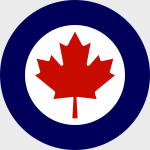Hobby Master HA3704 RCAF McDonnell CF-101B Voodoo Fighter - N0.409 "101057" Hawk One Canada, May 1984 (1:72 Scale)
"Television brought the brutality of war into the comfort of the living room. Vietnam was lost in the living rooms of America - not on the battlefields of Vietnam."
- Marshal McLuhan
 In the late 1940s, the Air Force had started a research project into the future interceptor aircraft that eventually settled on an advanced specification known as the 1954 interceptor. Contracts for this specification eventually resulted in the selection of the F-102 Delta Dagger, but by 1952 it was becoming clear that none of the parts of the specification other than the airframe would be ready by 1954; the engines, weapons, and fire control systems were all going to take too long to get into service. An effort was then started to quickly produce an interim supersonic design to replace the various subsonic interceptors then in service, and the F-101 airframe was selected as a starting point.
In the late 1940s, the Air Force had started a research project into the future interceptor aircraft that eventually settled on an advanced specification known as the 1954 interceptor. Contracts for this specification eventually resulted in the selection of the F-102 Delta Dagger, but by 1952 it was becoming clear that none of the parts of the specification other than the airframe would be ready by 1954; the engines, weapons, and fire control systems were all going to take too long to get into service. An effort was then started to quickly produce an interim supersonic design to replace the various subsonic interceptors then in service, and the F-101 airframe was selected as a starting point.
Although McDonnell proposed the designation F-109 for the new aircraft (which was to be a substantial departure from the basic Voodoo), the USAF assigned the designation F-101B. It was first deployed into service on 5 January 1959, with the 60th Fighter-Interceptor Squadron. The production ended in March 1961. The Voodoo featured a modified cockpit to carry a crew of two, with a larger and more rounded forward fuselage to hold the Hughes MG-13 fire control radar of the F-102. It had a data link to the Semi-Automatic Ground Environment (SAGE) system, allowing ground controllers to steer the aircraft towards its targets by making adjustments through the plane's autopilot. The F-101B had more powerful Pratt & Whitney J57-P-55 engines, making it the only Voodoo not using the −13 engines. The new engines featured a substantially longer afterburner than J57-P-13s. To avoid a major redesign, the extended afterburners were simply allowed to extend out of the fuselage by almost 8 ft (2.4 m). The more powerful engines and aerodynamic refinements allowed an increased speed of Mach 1.85.
The F-101B was stripped of the four M39 cannons and carried four AIM-4 Falcon air-to-air missiles instead, arranged two apiece on a rotating pallet in the fuselage weapons bay. The initial load was two GAR-1 (AIM-4A) semi-active radar homing and two GAR-2 (AIM-4B) infrared-guided weapons with one of each carried on each side of the rotating pallet. After the first two missiles were fired, the door turned over to expose the second pair. Standard practice was to fire the weapons in SARH/IR pairs to increase the likelihood of a hit. Late-production models had provision for two 1.7-kiloton MB-1/AIR-2 Genie nuclear rockets on one side of the pallet with IR-guided GAR-2A (AIM-4C) on the other side. "Project Kitty Car" upgraded most earlier F-101Bs to this standard beginning in 1961.
Pictured here is a 1:72 scale diecast replica of a Royal Canadian Air Forces McDonnell CF-101B Voodoo fighter that was attached to No. 409 Squadron and known as Hawk One Canada.
Sold Out!
Dimensions:
Wingspan: 6-3/4-inches
Length: 11-1/4-inches
Release Date: July 2012
Historical Account: "Aerial Display" - Throughout the Voodoo era in Canada, the aircraft was a popular performer at airshows and other flying events in Canada and the United States, with displays ranging from the appearance of a single aircraft all the way up to an entire squadron. Most noteworthy was the appearance of a CF-101 (in company with a CF-104 and The Red Knight T-33) as part of the Golden Centennaires display team, celebrating Canada's Centennial in 1967. Also, in 1984, each squadron painted a special "'show" aircraft to commemorate the impending retirement of the type, incorporating that Squadrons symbol. 409 Squadron produced "Hawk One Canada," 416 Squadron produced "Lynx One Canada," and 425 Squadron produced "Lark One Canada/Alouette Un Canada."


